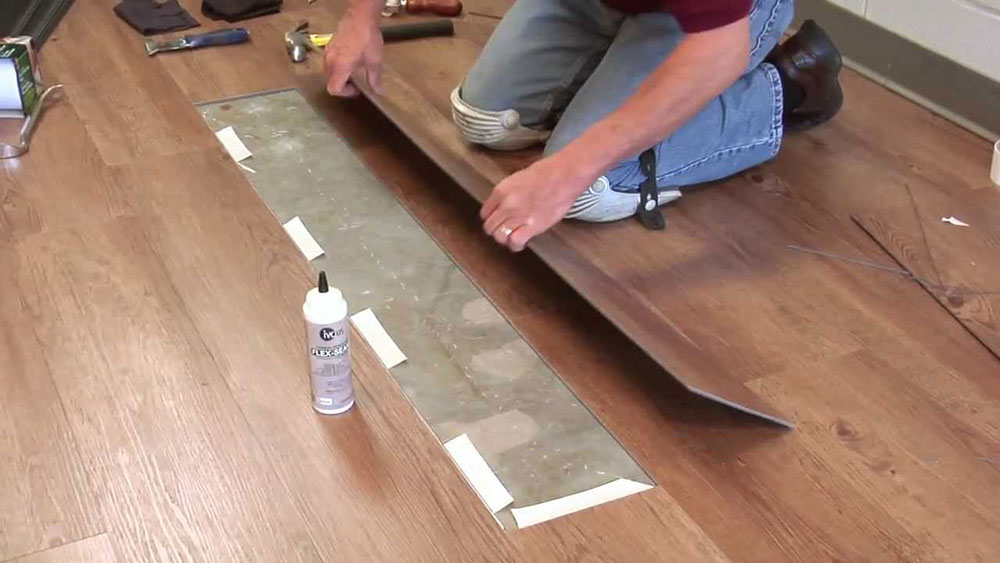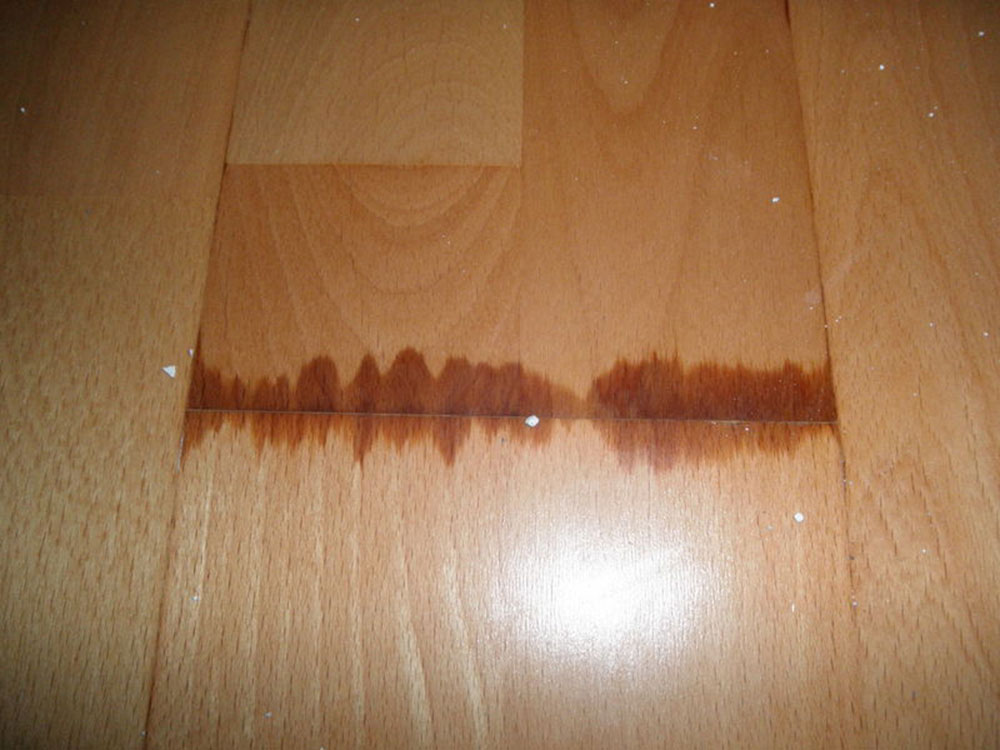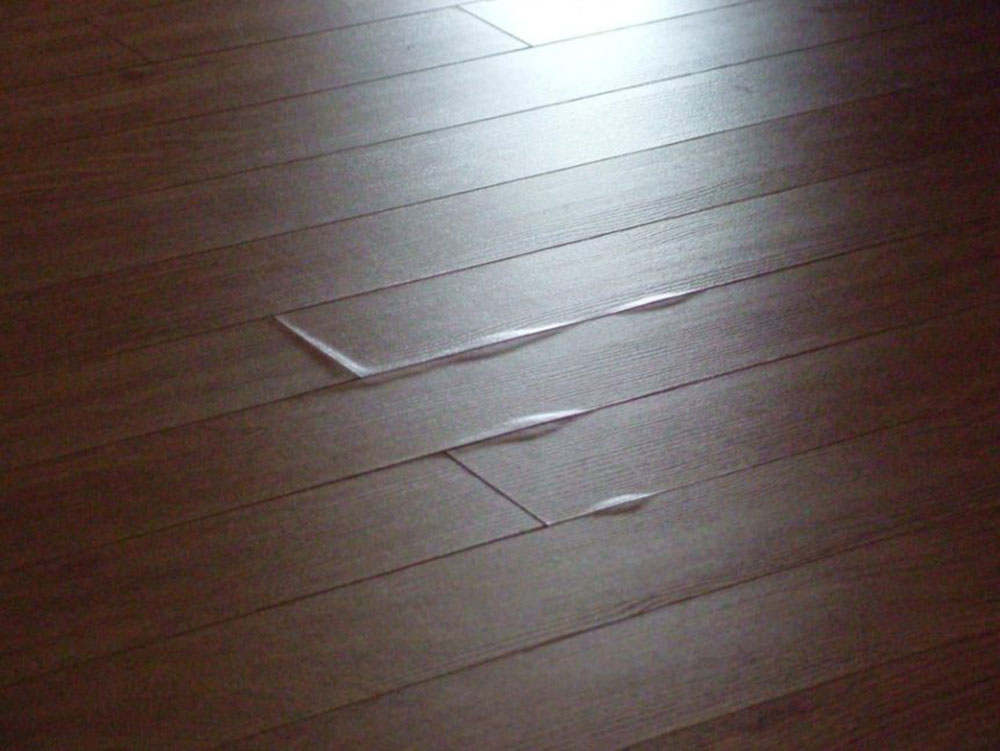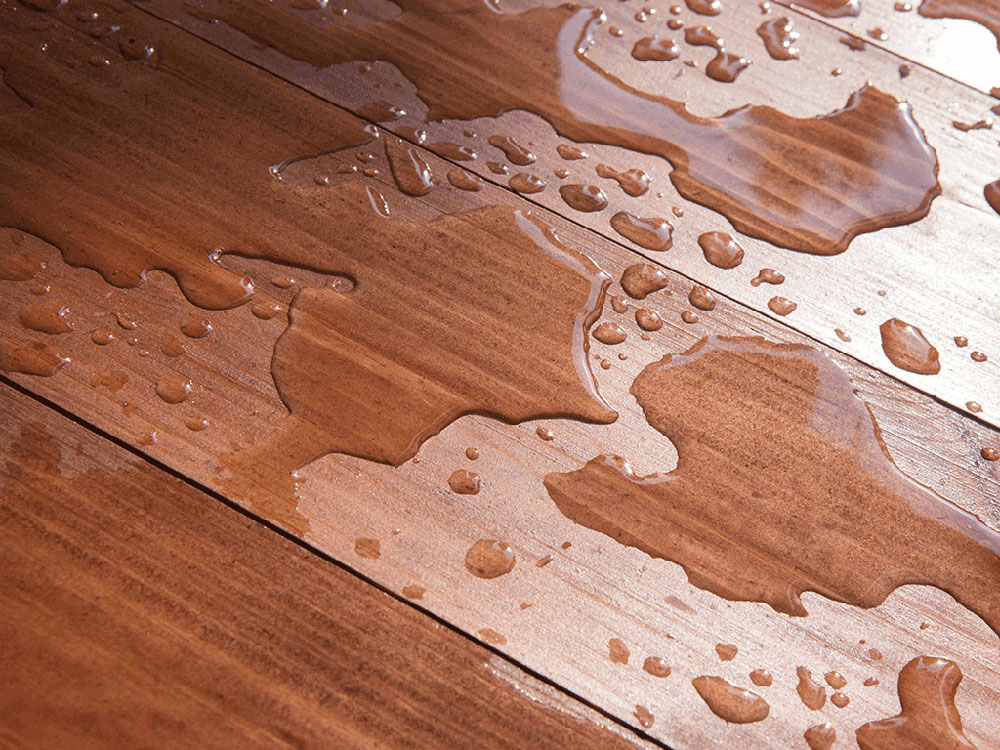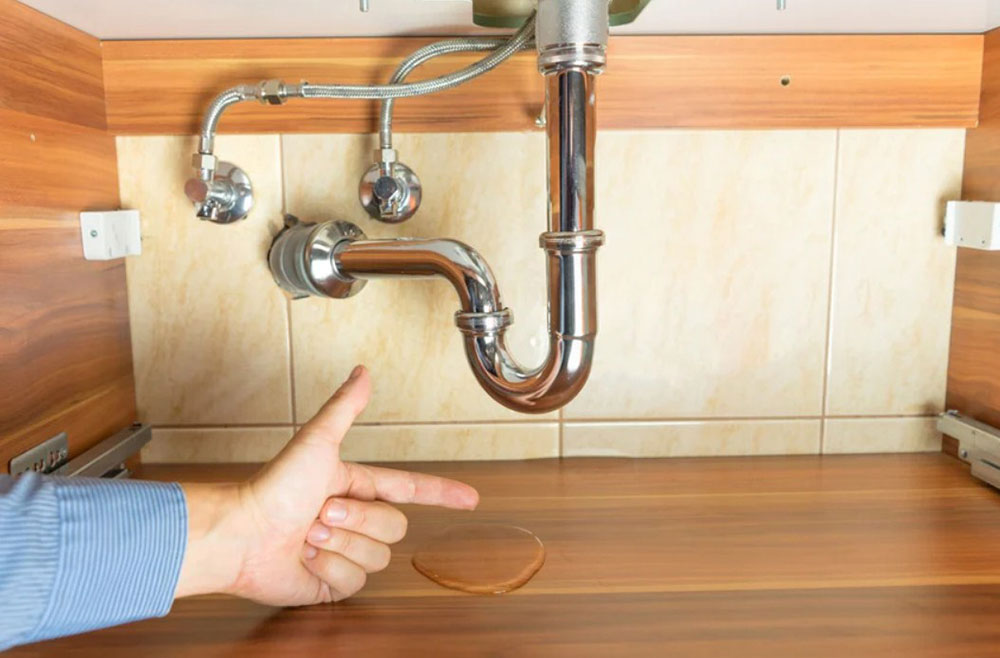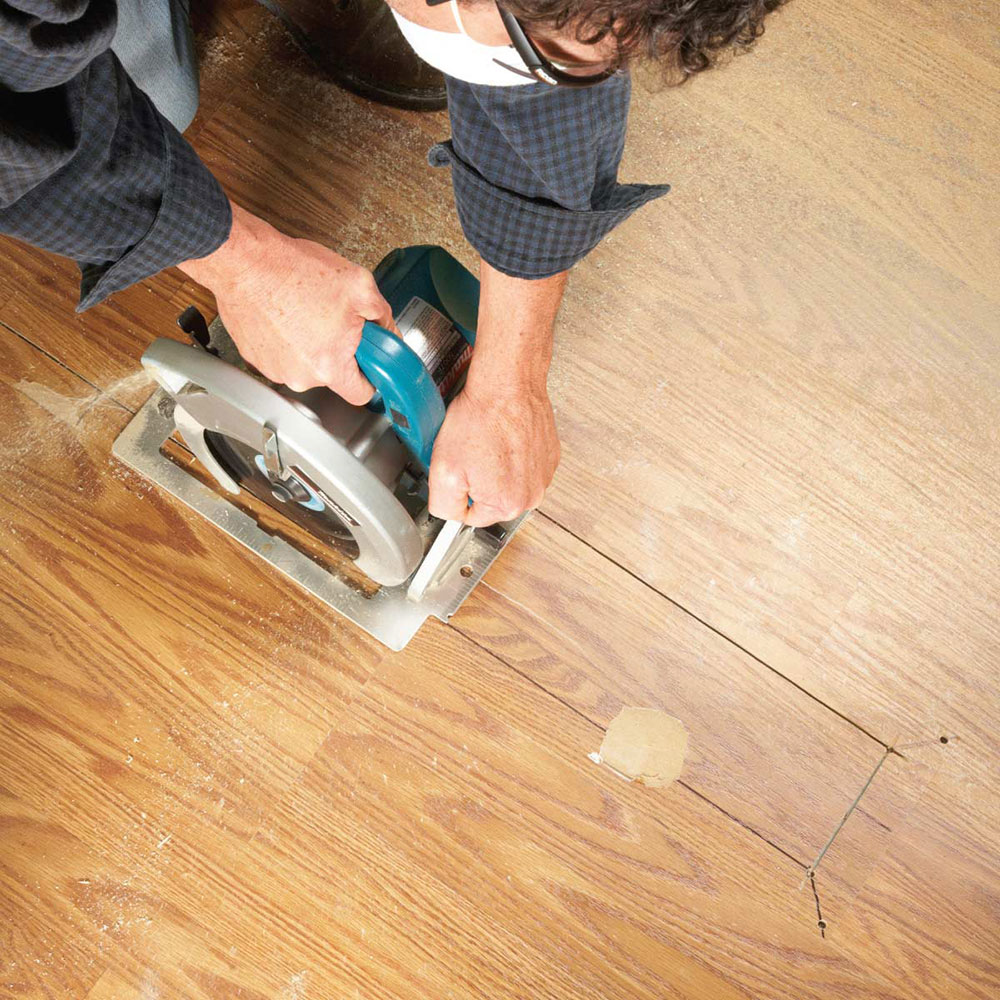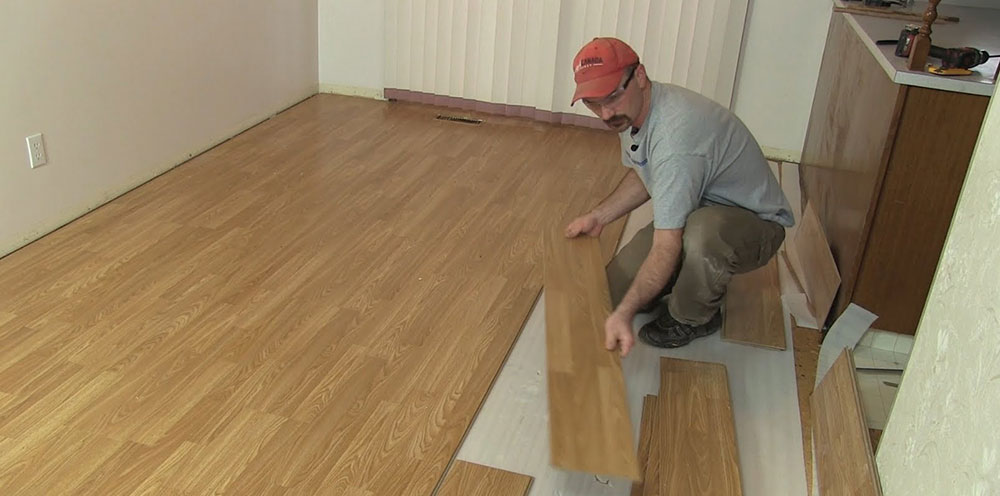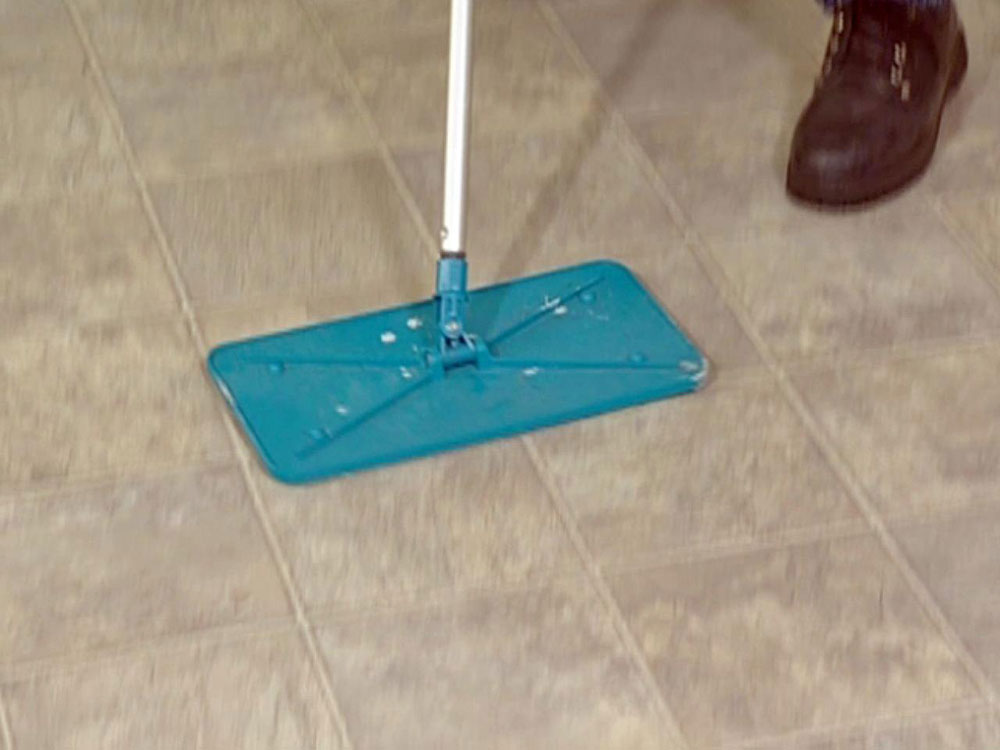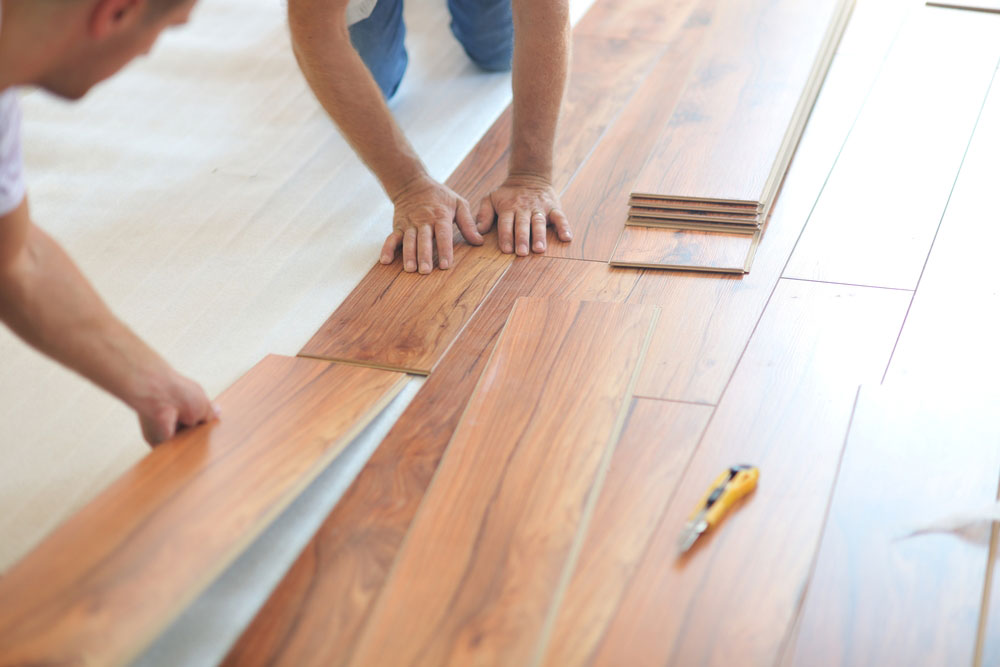Advertisement
Surely, almost every laminate owner has, at some point, pondered the question of how to fix a laminate floor that got wet. Water can cause problems of catastrophic proportions, not just to the laminate, but also to the floor underneath it. Mold and moisture will start to creep in, leading to more significant problems that will damage your laminate even further.
Now a small puddle of water when you spill your cup is not likely to cause many problems, as it can be dried quickly. We are talking about more substantial leaks here, ones that will do significant damage if not treated immediately.
That is the downside of laminate, especially compared to something like real wood. The latter can easily be repaired and sanded, while with laminate, you simply can’t afford to do that. Once it gets wet, it absorbs the water and the moisture, and the material starts to break down quickly. Perhaps one of your pipes is leaking, and the water is collecting on the laminate. Over more extended periods, that will cause problems.
Sometimes, it will require you to fix the cause of the leak in the first place, and then focus on the laminate. Here, we will take a look at how to fix a laminate floor that got wet.
Water Collecting on Top of the Laminate
Water will start collecting on top of the laminate, and you should not allow it to enter the seams and the sides of the laminate, which will be harder to get rid of. This is a preventive measure of how to fix a laminate floor that got wet.
As long as the laminate is not saturated and overwhelmed by the water, it will not get damaged. That is when you should act promptly and mop the water by patting a piece of paper, a towel, or a sponge. But if there is a massive, uncontrollable spill, the damage will inevitably occur, and not just to the top layer of the laminate. It will enter into deeper layers through the seams and cracks between the pieces of laminate, and cause the floor to bend, crack, and buckle under pressure.
It is crucial that you act as quickly as possible, and mop up the water before it enters the seams and the edges. Once it comes to the edges, it is especially hard to remove the water, and water will enter even further as the corners are often cut off. If it goes through the edges, use a wet-dry vacuum cleaner to get rid of it.
If the water enters through the seams, it will inevitably reach the fireboard core, which will cause the laminate to swell and crack. Take, for example, a book that gets wet or a table. These are often made of a particleboard, which will start to swell up once it starts to soak up the moisture. A similar thing happens to laminate. The signs of water coming underneath the laminate are bubbles that will spring up from the seams, swelling of the laminate, bending, and even cracking.
In more severe cases, the tiles might get torn apart by the water, causing irreversible damage. The best way to inspect this is to check every tile individually and push on the floorboard to see if they start to pop up. When you examine, be critical, and notice even the smallest movements of the tile. That can mean damage, and they might need replacing.
How to Fix a Laminate Floor that Got Wet
Let’s talk about how you can rescue the most out of such a situation. Note that, in some cases, there is no other choice than to replace the laminate completely. If the damage is too significant, it will require you to replace the entire room. And that can lead to high costs.
In some cases, the damage is so significant, and in such spots that you will need the help of a professional. There is only so much you can do on your own, especially if the water has already done its damage. We are talking about laminate damage control and laminate replacement. Hopefully, you still have some laminate packs still left from when you installed it. If not, you might have to get them now.
You might need to remove the laminate where it got damaged; if the damage was done in the center, you would probably need a circular saw or a fine-finish blade.
We are talking about controllable damage here, and the fixes you can make on your own. It will take some DIY knowledge and a bit of practice, but hopefully, you will find these practices helpful. If you can rectify the situation, you can do so with the following steps.
Stop the Leak
Of course, the first step of how to fix a laminate floor that got wet is locating the source of the leak and controlling the leakage. There can be various reasons for flooding, and they may include problems such as faulty appliances, leaking pipes, leaking toilets, and floods. These are the most common, and some can be controlled.
Locating significant leaks should not be too hard, but if you still cannot, contact a local water damage contractor to help you out.
Inspect and Evaluate the Damage
This next step will require your undivided attention. Try to find the damaged areas, which you can do by merely examining each and every tile for bubbles, warping, bending, and other signs of damage. Then, if you locate these areas, mark them with a marker or any other way of marking to help you remember where they are. Knowing where the damage has been caused is essential for identifying the further steps you should take.
Remove the Damaged Laminate Tiles
Now it is time to get to work. Before you can install new tiles, you will need to replace the damaged ones. By now, you should have evaluated which ones are damaged. For this step, you will need:
- A hammer or a crowbar
- A utility knife or a saw would also be helpful
- Protective glasses
Using the knife, pry up the damaged tiles and try to remove them one by one. Remember to wear protective glasses as to not get dirt or dust into your eyes.
Then, remove the baseboards under the tiles that you have just removed. Now you should be able to see the floor directly underneath the area where the leaks happened, and you will be able to observe the damage done (mold, dust). Try not to damage the baseboards too much; to do this, remove them slowly, one by one.
Before adding new tiles of laminate, you should clean up everything underneath the tiles. If the area is wet, use a cloth or a sponge and mop up the wet areas until they are completely dry. It might be a good idea to let it be for some time for it to dry or use a hair drier to dry it up. Then, mop up any dust and clean up the area. Now you can move on to replacing the tiles.
Replace the Tiles with new ones
Next up is possibly the most challenging part – replacing the tiles. We say challenging, as we expect that you will be beginners at this; for more advanced DIY enthusiasts, this will be a breeze.
One thing you need to make sure of is that the planks you will be putting in are the same as the rest of the planks. If you have some leftover from before, that would be ideal. If not, you can head to your local store to get them; just make sure they match yours as closely as possible. Take a sample with you to make sure.
You will also need flooring adhesive to attach the tiles together again. Now, put the tiles right next to the existing tiles, and try to squeeze them as tightly as possible (but not too close to allow you to add adhesive later on). Avoid nails and other potential hazards exposed earlier.
Then, apply the adhesive between the tiles. Add just enough to make them stick. Then, place a heavy object on top of them to let them stick better. Let them stand for some time and clean up the adhesive.
Ending thoughts on how to fix a laminate floor that got wet
Once you complete the process, you might want to mop up all the tiles and clean up the mess.
And there you have it; this is how to fix a laminate floor that got wet relatively quickly. You will need some patience. In the case of more significant damages, consult professionals, and try to get insurance claims (if at all possible).
If you enjoyed reading this article about how to fix a laminate floor that got wet , you should read these as well:

